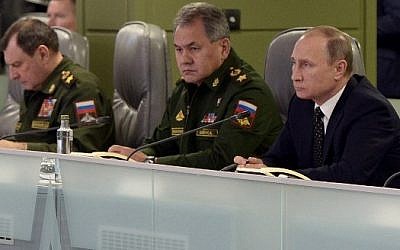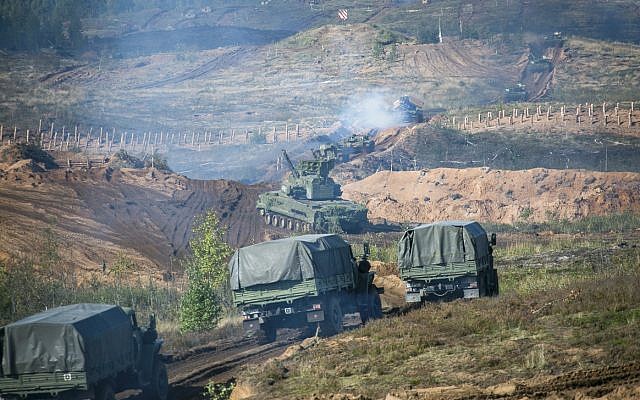Russia to hold biggest military drills since Cold War
Almost 300,000 troops and 1,000 aircraft will take part in mass war games ‘even bigger’ than Soviet Union’s huge 1981 Zapad exercises
MOSCOW, Russia (AFP) — Russia will flex its military muscles and hold the biggest war games since the Cold War era next month, including almost 300,000 troops and 1,000 aircraft, the Russian defense ministry said Tuesday, leading NATO to warn of a “more assertive Russia.”
The Vostok-2018, or East 18, exercises simulating large-scale warfare, which the Kremlin called “justified,” will be carried out from September 11 to 15 in the country’s east, with troops from China and Mongolia also taking part.
Those were unprecedented at the time in terms of the number of troops and military hardware, with around 100,000 troops involved, Russian television reported.
The war games come as Russia is hit by the latest round of US sanctions and faces even harsher ones over its alleged role in a nerve agent attack in Britain, with relations with the West at their lowest ebb since the Cold War.

NATO spokesman Dylan White said that since Vostok-2018 would take place east of the Ural mountains, Moscow was not obliged to notify the West or invite observers from the Organisation for Security and Cooperation in Europe, although an invitation had been extended to military attaches.
The planned drill showed “a more assertive Russia, significantly increasing its defence budget and its military presence,” White said.
Meanwhile Kremlin spokesman Dmitry Peskov defended the drills telling journalists that spending state funds on the country’s defense capabilities was “justified, necessary and the only option,” despite the country’s economic problems.
‘Unprecedented scale’
Defense Minister Shoigu said the drills would be “on an unprecedented scale both in terms of the area covered and in terms of the numbers” of military forces.
“More than 1,000 aircraft, almost 300,000 troops and almost all the firing ranges of the Central and Eastern military districts” would be involved, he said. “Imagine 36,000 pieces of military equipment moving together at the same time — tanks, armoured personnel carriers, infantry fighting vehicles. And all of this, of course, in conditions as close to combat as possible.”
Russian troops underwent snap checks of their combat-readiness last week and Russia has already sent around 30 fighter planes to aerodromes in eastern Siberia, the defence ministry said.
Chinese troops have also begun arriving by train with their equipment in the region east of Lake Baikal, the ministry said.
Under President Vladimir Putin, Russia has massively upgraded its military equipment and modernized the armed forces, which have demonstrated their increased strength in operations in Syria in support of President Bashar Assad.
While having a practical purpose of testing military skills, drills are also designed to show a country’s potential opponents how it could behave in a real conflict situation.
Moscow said last year’s Zapad-2017 military drills, conducted in ally Belarus and western regions of Russia, had roughly 12,700 troops taking part, raising eyebrows in neighbouring NATO members Poland and the Baltic states.
NATO claimed Russia could have been massively under-reporting the scale of the exercises, which some of the alliance’s eastern members said involved more than 100,000 servicemen.
In 2015, Russia held drills involving 80,000 troops in regions spanning the country from the Arctic in the far east to the southern Caucasus.
